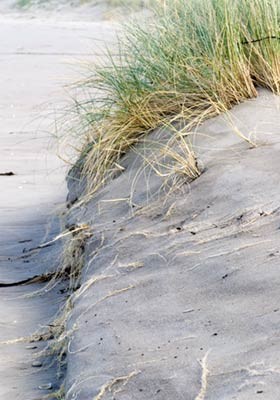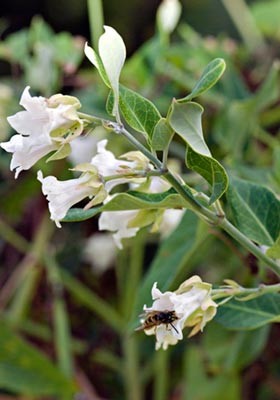 Marram grass (Ammophila arenaria). Photo: Jeremy Rolfe.The Department of Conservation regularly assesses the potential impact of all exotic plants that occur in New Zealand. As a result it has identified 328 plant species as environmental weeds. That is they are species that will impact detrimentally on the structure, composition or function of indigenous plant communities. Almost half of all these weeds are trees and shrubs. Two-thirds of environmental weeds in New Zealand have been deliberately introduced as ornamental plants. Go to the Weed Control section of this website for more information.
Marram grass (Ammophila arenaria). Photo: Jeremy Rolfe.The Department of Conservation regularly assesses the potential impact of all exotic plants that occur in New Zealand. As a result it has identified 328 plant species as environmental weeds. That is they are species that will impact detrimentally on the structure, composition or function of indigenous plant communities. Almost half of all these weeds are trees and shrubs. Two-thirds of environmental weeds in New Zealand have been deliberately introduced as ornamental plants. Go to the Weed Control section of this website for more information.
The national list of weeds can be downloaded here:
- Department of Conservation’s consolidated list of environmental weeds (by Clayson Howell - 2008)
Some examples of weeds identified by the Department are:
- Kikuyu grass (Pennisetum clandestinum) is an example of a species deliberately introduced, for use as a pasture and turf grass in northern New Zealand . It is able to form dense mats of stolons and can out compete and smother lower growing native plants and prevent seedling establishment and regeneration.
- Evergreen buckthorn (Rhamnus alaternus), from the Mediterranean, is an example of a shrub that is spreading rapidly in lowland and coastal areas in New Zealand . The species is dispersed by birds, tolerant of shade and drought, and forms dense colonies that can dominate sites and out compete native plants - altering the plant community structure where it invades.
- Marram (Ammophila arenaria), an exotic sand binder from Europe, was also deliberately planted around New Zealand in coastal areas as a ‘dune stabiliser’ and stock food. It builds high fore dunes that smother the smaller dunes produced by our native sand binders, spinifex and pingao, and buries threatened native turf field and dune slack communities.
 Moth plant (Araujia serifera). Photo: Jeremy Rolfe.For more information about weeds in New Zealand see:
Moth plant (Araujia serifera). Photo: Jeremy Rolfe.For more information about weeds in New Zealand see:
